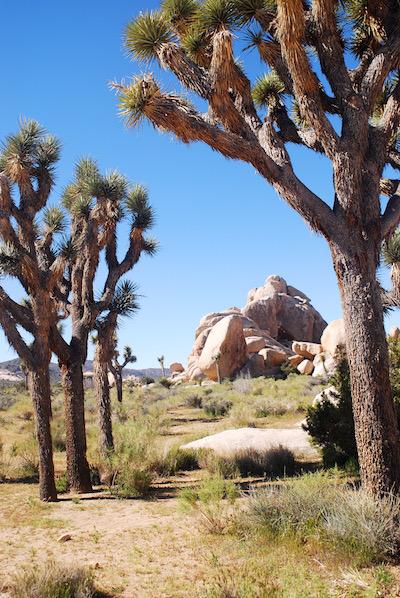
Joshua Tree National Park's signature Joshua trees could vanish due to climate change/Kurt Repanshek file
Yellowstone National Park escaped the summer without any large conflagrations in its forests, but that could be an anomaly under the current pace of climate change. Pikas could vanish from parks such as Lassen Volcanic and Great Basin. Glaciers and Joshua trees could be seen only in photographs and paintings in their namesake parks, and Virgin Islands and Hawai'i Volcanoes national parks could see diminished rainfall.
Southwestern parks such as Canyonlands, Grand Canyon, and Arches, already hot and arid, stand to become more so as droughts such as the current one become more commonplace.
Those are just some of the changes coming to the National Park System in the coming decades if anthropogenic climate change isn't reversed, according to new research from scientists at the University of California Berkeley, and the University of Wisconsin.
Simply put, the scientists say, the landscapes preserved by the National Park System are bearing a disportionately greater impact of climate change than the rest of the United States. The reason, they say, is that a greater percentage of the National Park System is located at higher elevations than most U.S. landscapes. Also, because Alaska has more national park acreage than the rest of the country.
"Sixty-three percent of national park area is in Alaska, compared to 16 percent of the US and 19 percent of national park area is north of the Arctic Circle, compared to 3pecent of the US," the wrote in an environmental research letter, Disproportionate magnitude of climate change in United States national parks, posted Monday on the IOPScience website.
And while parks in Alaska and the Arctic will see higher temperatures, those in Hawai'i, the Southwest, and the Caribbean will see less precipitation, the paper forecast.
National Park Service staff in Washington did not respond to a request for comment on the paper's findings.
With these changes underway, National Park Service staff will have to become more adept at adapting to these changing conditions. But some impacts, such as the loss of glaciers from Glacier National Park, the loss of some endemic species, the upward movement of forests, could be too hard for the Park Service to overcome.
"With continued greenhouse gas emissions, projected rates of 21st century temperature increase under the highest emissions scenario would be six times greater than 20th century rates for the national park area and the US," reads the report that was based on temperature and precipitation data from 1895-2010.

Hot, arid parks such as Canyonlands National Park stand to become more so under climate change/Kurt Repanshek file
In a bid to save species from climate change impacts, the paper notes there is a need for areas that evade the worst of the impacts for desert ecosystems such as those found in Joshua Tree National Park, "thermal refugia for cold water fish, protection of corridors for species migrations, and prescribed burning in confir forests to remove excessive understory vegetation and increase survival of older trees in drought."
Under current climate trends, the National Park System stands to reflect a large amount of impacts.
"In Yellowstone National Park, climate change could increase area burned by wildfire three to ten times from 1990 to 2100, far above natural levels. In Joshua Tree National Park, climate change could cause extensive mortality of Joshua trees by 2100 and loss of up to 90 percent of areas with suitable climate," the paper stated. "In Lassen Volcanic National Park, American pika, a small alpine mammal, is vulnerable to extirpation."




 Support Essential Coverage of Essential Places
Support Essential Coverage of Essential Places







Comments
Here is a link to the study:
http://iopscience.iop.org/article/10.1088/1748-9326/aade09/meta